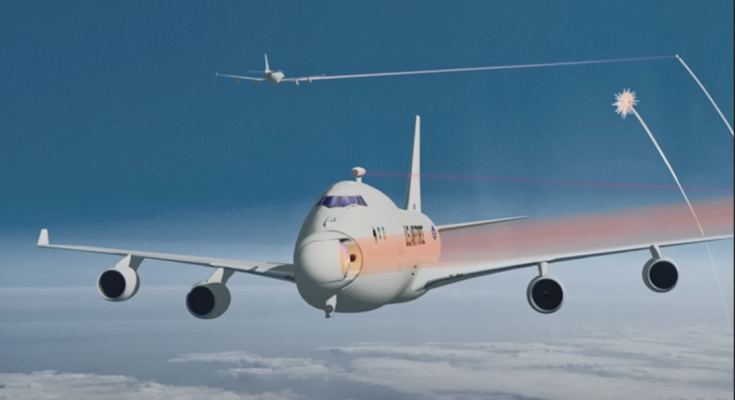The U.S. military has explored the concept of installing powerful lasers on large aircraft, notably the Boeing 747, to enhance missile defense capabilities. This initiative culminated in the development of the Airborne Laser (ABL) program, which aimed to deploy a high-energy laser system aboard a modified Boeing 747-400F.
Development and Objectives
Initiated in the late 1990s, the ABL program sought to create a mobile, airborne platform capable of intercepting and destroying ballistic missiles during their boost phase. The primary objective was to provide a rapid-response defense mechanism against missile threats, leveraging the aircraft’s mobility to position itself optimally for interception.
Design and Capabilities
The ABL system was equipped with a megawatt-class Chemical Oxygen Iodine Laser (COIL), housed within the aircraft’s fuselage. This laser was designed to fire through a turret in the nose of the aircraft, enabling it to target and disable incoming missiles. The system utilized advanced tracking and targeting technologies to detect and lock onto missile threats, allowing for precise engagement.
Testing and Challenges
The ABL underwent extensive testing, achieving significant milestones, including the successful destruction of test missiles in 2010. However, the program faced several challenges:
-
Operational Viability: The practicality of deploying such a large and complex system was questioned, particularly concerning its ability to operate effectively in various combat scenarios.
-
Cost: The program’s expenses escalated, with projections indicating that operationalizing the ABL would require multiple aircraft and substantial ongoing costs.
-
Technological Limitations: While the laser demonstrated the capability to destroy missiles, scaling the technology for broader applications and ensuring reliability under diverse conditions remained significant hurdles.
Conclusion
Despite its innovative approach, the ABL program was ultimately canceled in December 2011 after 16 years of development and an investment exceeding $5 billion. The decision was influenced by the challenges mentioned above, leading to a reevaluation of the feasibility of deploying such a system. While the ABL program did not transition to operational status, it provided valuable insights into airborne laser technologies and their potential applications in missile defense.
For a visual overview of the Airborne Laser program and its implications, you can watch the following video:



